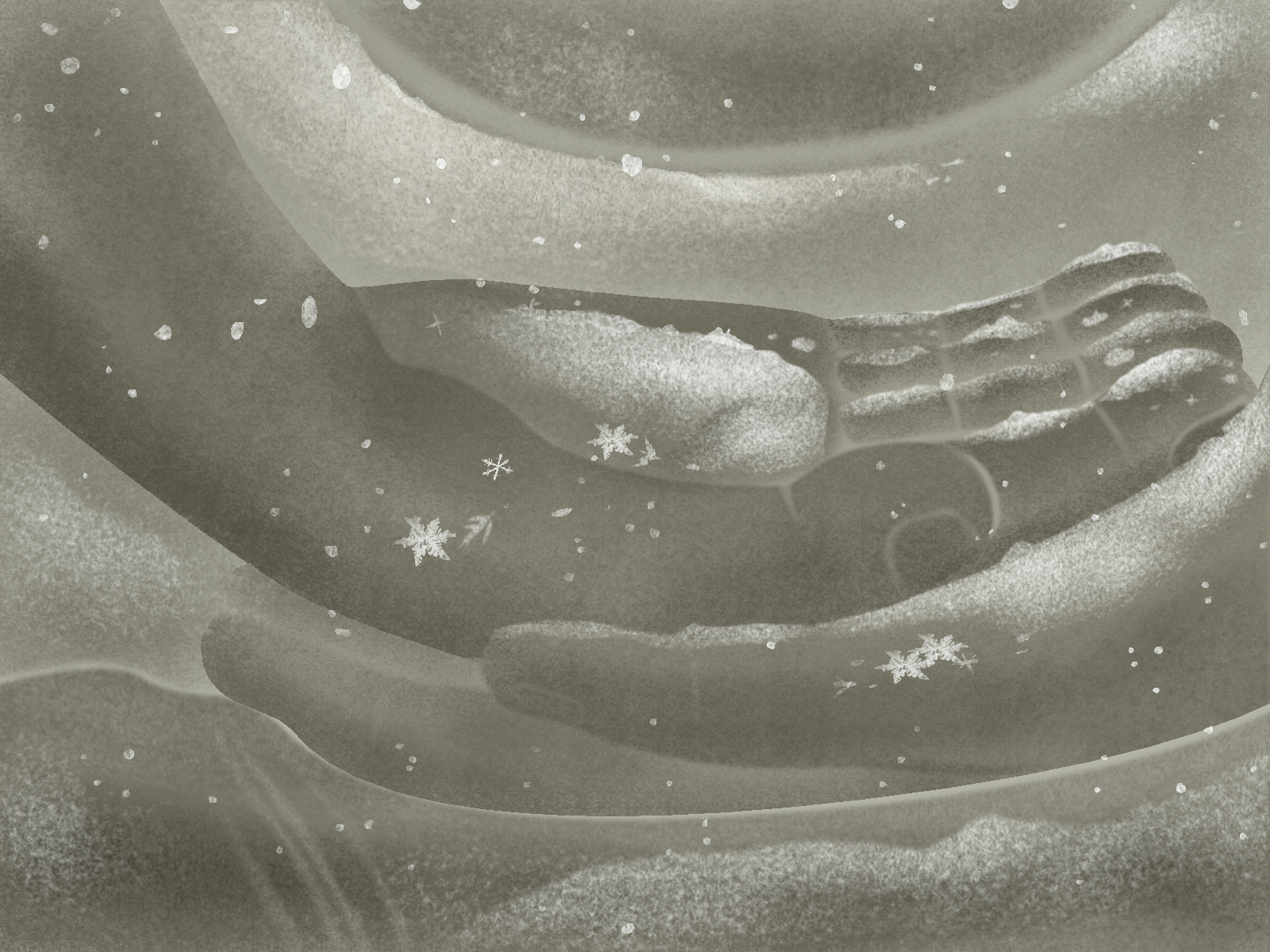Best of the Haiku Challenge (December 2022)
Announcing the winning poems from Tricycle’s monthly challenge The post Best of the Haiku Challenge (December 2022) appeared first on Tricycle: The Buddhist Review.

Haiku is an embodied form of literature in which plants, animals, weather, and other seasonal phenomena form the basic subject matter. When we have something thoughtful or personal to say in a haiku, we ground it in images drawn from nature. This gives our poetry a depth and universality that would otherwise be difficult to attain in 17 syllables. The winning and honorable mention poems for this month’s haiku challenge explored the possibilities for poetic meaning in one of nature’s most delicately beautiful manifestations.
Jan Häll recovers the timeless wisdom of a world before writing in his description of a snowstorm reciting a sutra. Mariya Gusev sees in the path of each snowflake a “letter from the sky” inscribing the history of its fall. Kelly Shaw experiences a sudden snow flurry as a visible representation of the strings that entangle us all.Congratulations to all! To read additional poems of merit from recent months, visit our Tricycle Haiku Challenge group on Facebook.
You can submit a haiku for the January challenge here.
***
WINNER:
Outside my window
it keeps reciting itself —
the snowflake sutra.
— Jan Häll
Although written texts are venerated by all major spiritual traditions, literacy itself may be at the bottom of our current ecological crisis. Beginning roughly 5,500 years ago, the movement from oral to written culture led human beings to adopt abstract ways of thinking that reinforced their feelings of separation from nature.
The anthropologist Claude Lévi-Strauss saw the problem clearly in 1974. In Myth and Meaning, he observed that the difference between societies with writing and those without written language was that the former wrote almost entirely about themselves—the human story of the rise and fall of empires—while the latter, so-called “primitive” people, had vast oral lore about the natural world.
December’s winning haiku invites us to imagine a world in which wisdom, bypassing the inherently anthropocentric filter of written language, is once more rooted in our direct experience of nature. At home in his native Stockholm, the poet watches snowflakes falling ceaselessly outside his window. The very silence of that falling seems to demand that he enter more deeply into communion with them, listening with the eye rather than the ear.
Given his comparison of the snowflakes to a sutra, the poet could have described them in terms of writing. But he doesn’t. He sees them reciting the sutra. More than that, they ARE the sutra. The language of the poem is unambiguous: the snowflake sutra is “reciting” the soundless sound of itself.
In some schools of Buddhism, a sutra is regarded as more than a sacred text. It is an embodiment of Buddhahood or universal lifeforce. In Nichiren Buddhism, the Lotus Sutra is regarded as “the Entity of the Mystic Law.” Those who chant the title of that sutra—Nam-myoho-renge-kyo—unite with that entity which, today, we might speak of as analogous to our planetary ecology.
It is a remarkably simple poem in all respects. Watching the snowflakes, the poet imagines them ceaselessly reciting the sutra of themselves. Or maybe he doesn’t imagine that. Maybe he witnesses it—and, in so doing, unites briefly with the Snowflakes of the Mystic Law.
As a further point of interest: Notice the poet’s artistry in the second line of the haiku: “it keeps reciting itself.” Although the season word suggests a feeling of delicate, soundless beauty, taken as a whole the poem conveys a feeling of cumulative power. The “snowflake sutra” is a storm.
HONORABLE MENTIONS:
letters from the sky —
each snowflake forms while drifting
recording its fall
— Mariya Gusev
flurry of snowflakes,
suddenly I see the strings
entangling us
— Kelly Shaw
♦
You can find more on December’s season word, as well as relevant haiku tips, in last month’s challenge below:
Winter season word: “snowflakes”
the snowflakes falling
into the hot tub quickly
become naked too
My wife and I arrived at a spa with private hot tubs, just as the first snowflakes were beginning to fall. It took a while for us to let go and relax in the hot water. For the snowflakes, it took no time at all.
Submit as many haiku as you wish that include the winter season word “snowflakes.” Your poems must be written in three lines of 5, 7, and 5 syllables, respectively, and should focus on a single moment of time happening now.
Be straightforward in your description and try to limit your subject matter. Haiku are nearly always better when they don’t have too many ideas or images. So make your focus the season word and try to stay close to that.
REMEMBER: To qualify for the challenge, your haiku must be written in 5-7-5 syllables and include the word “snowflakes.”
Haiku Tip: Master the art of humor!
The Japanese word haiku is composed of two characters: HAI (俳), meaning “light or comical,” and KU (句), meaning “verse.” Thus, haiku means literally “humorous verse.” But humor of what kind exactly?
The more examples we find of haiku humor, the more puzzling it becomes. It can be whimsical or profound, funny or sad, sexy or spiritual, philosophical, topical, scatological, or even dark.
The Japanese critic Kenkichi Yamamoto (1907-1988) felt that kokkei was the essence of haiku. At a talk in New York in 1978, he described it as “that which causes mirth, laughter, or a smile,” but insisted that it was somewhat elusive and difficult to define.
Somewhere beyond or behind the poem itself, there is always a rather refined smile—and even beyond that we find the kind of feeling, or sensitivity, which appreciates the loneliness of this life we are living. In this sense, loneliness in life and the comical elements of life are two side of the same coin. The best haiku achieve this balance.
Kokkei is sometimes translated as “unconventional humor” or even “strange humor.” But neither of these quite hits the mark. The poet Bin Akio (b. 1950) believes that, at its best, haiku humor challenges our ordinary understanding of the world. “It is not confused about the present world,” he insists, “but rather acquires a deeper world view.”
If I had to use one word to describe haiku humor, I would say that it is “unpredictable.” It is one thing in one moment, another in the next. Humor is haiku’s way of dancing always just a little ahead of itself, revealing something new or novel, unusual or surprising, with every turn of the path.
A note on snowflakes: As a season word, “snowflakes” are easy to conflate with snow. With its flat whiteness covering the ground, or its heaviness piled up on a fencepost or a roof, snow functions like a noun. Snowflakes are more verb-like. Surrounded by air, one sees them in motion. Even when still, their shapes often feel sentient and alive.
Here are two modern Japanese haiku that capture the essence of this season word:
Inside my closed eyes
the white soul of each snowflake
just passes away
— Ei Akao
In this beautiful
thing called air, flake upon flake
the snow dances down
— Kazuko Hanatani
Translated by Koko Kato and David Burleigh in A Hidden Pond: Anthology of Modern Haiku.

 BigThink
BigThink 
































